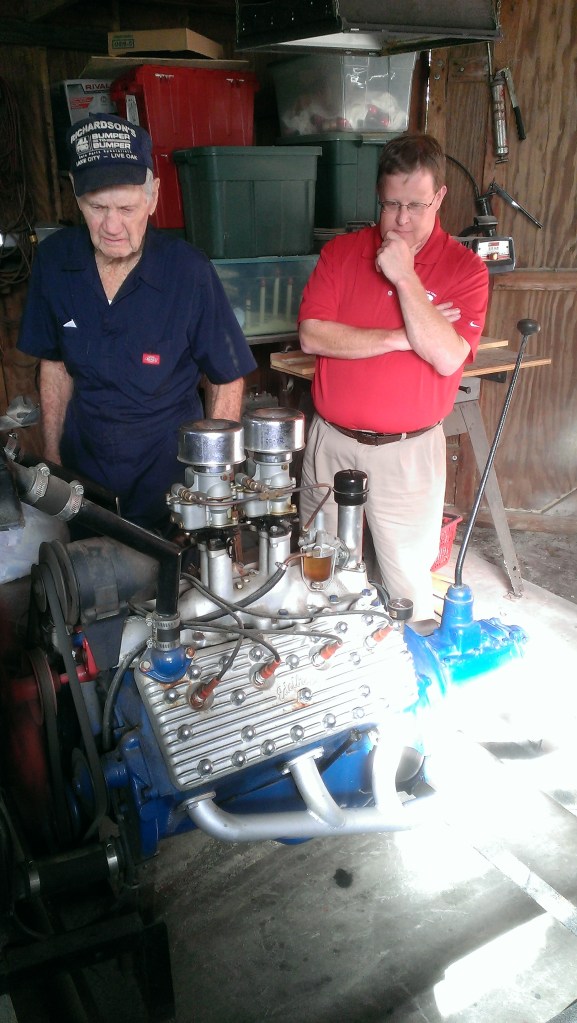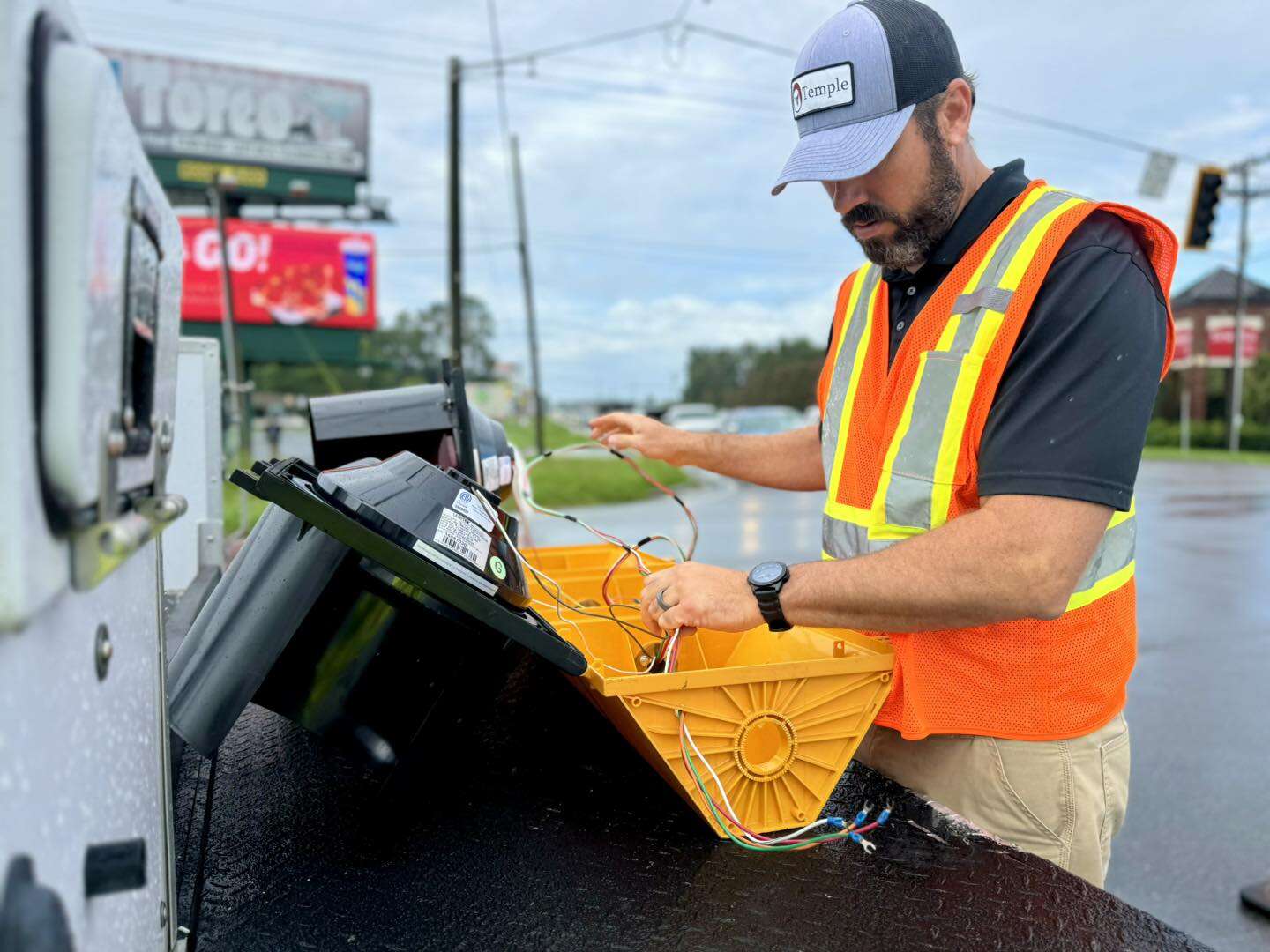NASCAR legend calls Suwannee County home
Published 9:57 am Monday, January 27, 2014

- Johnny Thompson (left) and Walt’s Live Oak Ford general manager Jason Archer listen to the sounds of a 1952 Ford Flathead at Thompson’s barn near Live Oak. It is the kind of engine Thompson ran on the Daytona Beach Course in the 50s. “What’s unique about the engine is that two middle cylinders share and exhaust port,” said Thompson.
Editor’s note: This is the first of a two-part series on NASCAR racing legend, Johnny “Speedy” Thompson.
There are stories about the bravery and the iron-fisted constitutions of the early drivers of NASCAR. It was a time of sand and speed, when the annual spring assault on the beach at Daytona brought drivers from all over the United States to compete on two miles of beach and two miles of black top on Highway A1A.
For those too young to remember, this was the era where the heart and soul of a sport was born.
It is a compelling time of racing’s most colorful legends when the drivers rolled up their sleeves and raced, not for the money or the fame, for the raw sport.
They were legends of NASCAR.
Johnny “Speedy” Thompson is one of those legends.
Thompson and his wife were looking for land in North Florida when they settled in Suwannee County.
His collection of memorabilia, engines and newspaper clippings fill his entire barn.
Thompson has written a book that sold over 700 copies titled, ”From the Cotton Patch to the Race Track”.
A veteran of World War II and the Invasion of Normandy, Thompson mostly did welding in the military. When the war ended, he came home to an America where jobs were scarce. The major shipyards where he applied his trade were winding down and it was tough finding work.
In February of 1947, he went to the beach course on Dayton Beach to watch his first race.
“I stood in the palmettos and watched my first race,” Thompson said.
He was 23-years-old and he was hooked.
“Seeing the race gave me the interest and desire for the competition,” he said.
September of that year found Thompson looking for any kind of work.
In the help wanted classified section of a Jacksonville newspaper he read about “someone wanting a race driver” to race at Jacksonville Speedway.
Hoping to make a few dollars, he went to the address of the Milford Brothers Body Company.
“I was the first person to show up for the job,” explained Thompson. “I told them I did a lot of racing out west, midgets and drags. I had to tell them my racing was at a place as far away from Jacksonville as I could think of so my story would be hard for them to check because I had never raced.”
Thompson got the ride from the Milford Brothers.
In a 1938 Hudson, he finished third in each heat race, second in the consolation race and sixth in the feature.
His efforts netted him $40.
“It was a good pay day,” Thompson said. “Went to the track without a penny in my pocket and came out with forty dollars.”
As fate would have it, one of the people watching the race that day was Marshall Teague.
Teague was well know in the area and nationally for driving the legendary “Fabulous Hudson Hornet”, the first car to run two carburetors.
After the race, Teague went to the Milford Brothers and told them Thompson would be”hell” to get along with on the track with a few more races under his belt.
“That was a strong endorsement, especially coming from someone with Teague’s abilities behind the wheel of a race car,” explained Thompson.
Thompson ran three more races for the Milford Brothers. In the feature of the third race, he wrecked the car in a rollover.
The Milford Brothers got out of racing at that point and Thompson was out of a ride.
“I picked up a ride in 1949 from a man named Albert Johnson,” he said. “In a Ford Flathead, I won three races at Jacksonville Speedway and finished second in the season’s points standing.”
Thompson maintained that he would have won the championship that year had it not been for someone tampering with his car, putting syrup in his gas tank.
The racing “bug” had ignited in Thompson and in 1950 he landed a ride from an individual named Brooks Fiveash.
That year he was the first driver to win 12 consecutive races at Jacksonville Speedway.
Track promotors brought in one of the Southeast’s top drivers in Buddy Shuman from Charlotte, North Carolina.
They figured he and his Hudson Hornet could break Thompson’s winning streak at the track.
Shuman failed to put the brakes on Thompson’s wining ways that year.
“At that time, I was making $100 a week doing something I really enjoyed in addition to my welding work,” explained Thompson.
He was leading in the points at Jacksonville Speedway in 1951 when he left to go to Montreal, Canada, to race and work for Charlie Jolie.
Jolie owned the Hollywood Daredevils, a stunt driving show during that period. Thompson drove a race car for him as well as driving a car in his stunt show.
The second part of this two part series continues next week when Johnny Thompson heads to the birthplace of speed on Daytona Beach sand.





